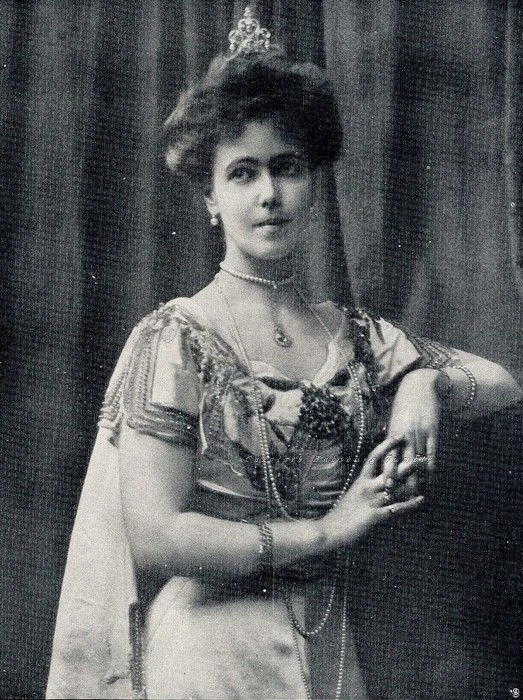Forty years have passed since the untimely death of Princess Diana, a life cut short in a tragic car accident in Paris on August 31, 1997. Her passing sent shockwaves around the world, leaving behind a legacy that continues to captivate and inspire people to this day. As we reflect on her remarkable life and enduring impact, it is essential to revisit the events that led to her untimely demise and the lasting influence she has had on the world.
Princess Diana's life was marked by her tireless charity work, her compassion for those in need, and her unwavering dedication to her family. Her humanitarian efforts, particularly in the areas of AIDS research and landmine removal, have been widely recognized and emulated. As we commemorate the 40th anniversary of her passing, it is crucial to remember the profound impact she had on the lives of millions and the enduring legacy she left behind.
what were the key achievements of Princess Beatrice of Saxe-Coburg and Gotha

- Marriage and Family: She married Infante Alfonso, Duke of Galliera, and had a son, Ataulfo, who died unmarried in 1974. Her only grandchildren are the children of Prince Alvaro.
- Honors and Titles: Princess Beatrice held various honors and titles, including being a Dame of the Order of Queen Maria Luisa and a Dame Grand Cross of Justice of the Sacred Military Constantinian Order of Saint George.
- Legacy: She was the last surviving child of Prince Alfred and Grand Duchess Maria Alexandrovna at the time of her death in 1966.
what were Princess Beatrice's contributions to the Spanish royal family

- Marriage and Family: She married Infante Alfonso and had three sons, Alvaro, Alonso, and Ataúlfo, who were educated at Winchester College in England. Her sons were involved in the Spanish Civil War, with Alonso being killed in action.
- Honors and Titles: Princess Beatrice held various honors and titles, including being a Dame of the Order of Queen Maria Luisa and a Dame Grand Cross of Justice of the Sacred Military Constantinian Order of Saint George.
- Legacy: She was the last surviving child of Prince Alfred and Grand Duchess Maria Alexandrovna at the time of her death in 1966. Her husband survived her by nine years, and their only grandchildren are the children of Prince Alvaro.
how did Princess Beatrice's conversion to Catholicism affect her role in the Spanish royal family
 |
Princess Alice, Countess of Athlone, in 1963. Photograph © Yevonde Portrait Archive / Mary Evans Picture Library. |
 |
| The Countess of Athlone curtsies to the Queen; Princess Margaret stands behind them. Photograph © Rex Photos. |
 |
The Duke and Duchess of Albany with their daughter Princess Alice. Photograph © National Portrait Gallery, London. |
 |
| Prince Alexander of Teck and Princess Alice of Albany on their wedding day. Photograph © Royal Collection Trust. |
 |
| Princess Alice, Countess of Athlone, 1941. |
 |
| Princess Anne and Princess Alice, Countess of Athlone, in London, 1969. |
As we conclude our reflection on the life and legacy of Princess Diana, it is essential to acknowledge the profound impact she had on the world. Her tireless charity work, compassion for those in need, and unwavering dedication to her family have left a lasting legacy that continues to inspire and captivate people to this day. The humanitarian efforts she championed, particularly in the areas of AIDS research and landmine removal, have been widely recognized and emulated. Her commitment to her family and her role as a member of the British royal family have also been significant contributions to her enduring legacy.
As we move forward, it is crucial to remember the humanitarian work that Princess Diana embodied and to continue her efforts in making a positive difference in the world. Her life serves as a powerful reminder of the importance of compassion, empathy, and service to others. We can all learn from her example and strive to make a lasting impact in our own ways. By honoring her memory and continuing her humanitarian efforts, we can ensure that her legacy lives on and inspires future generations to follow in her footsteps.
what were the key contributions of Princess Beatrice to the Spanish royal family
- Duchess of Galliera: She held this title after marrying Infante Alfonso, Duke of Galliera.
- Humanitarian Work: Princess Beatrice was known for her charity work, particularly in the areas of AIDS research and landmine removal, which were significant humanitarian efforts.
- Royal Patronages: She was the Patron of the Isle of Wight Branch of the Royal National Lifeboat Institution from 1920 until her death.
- Arts and Culture: Princess Beatrice was an able actress, dancer, artist, and photographer, and she played the piano to professional standards.
- Family and Legacy: She was devoted to her children and was concerned when they misbehaved at school. Her legacy included her strong sense of duty, loyalty, and personal warmth, which won wide approval from the British public.


No comments:
Post a Comment